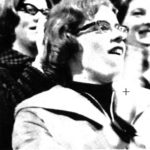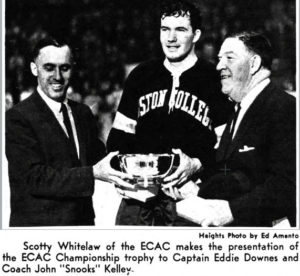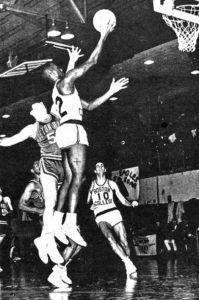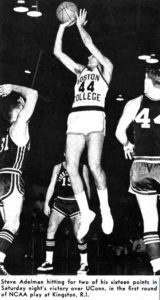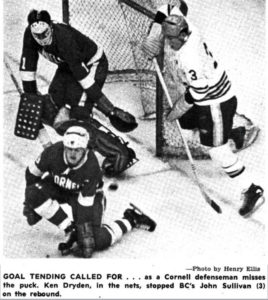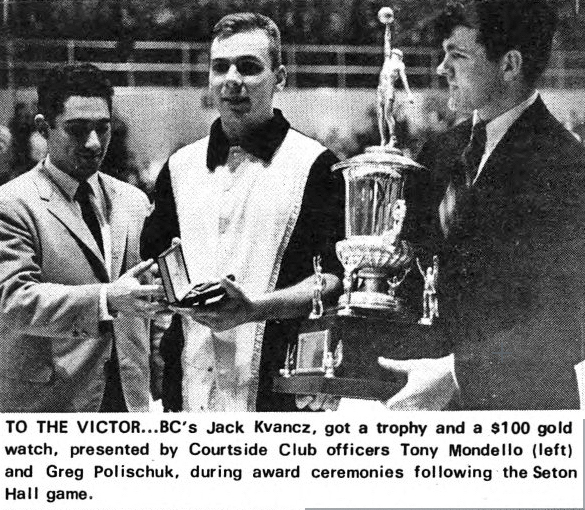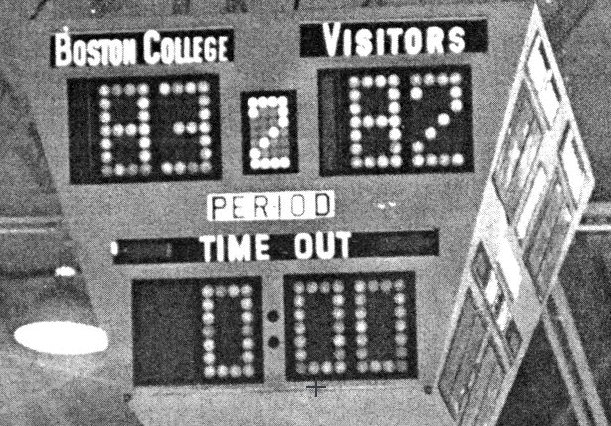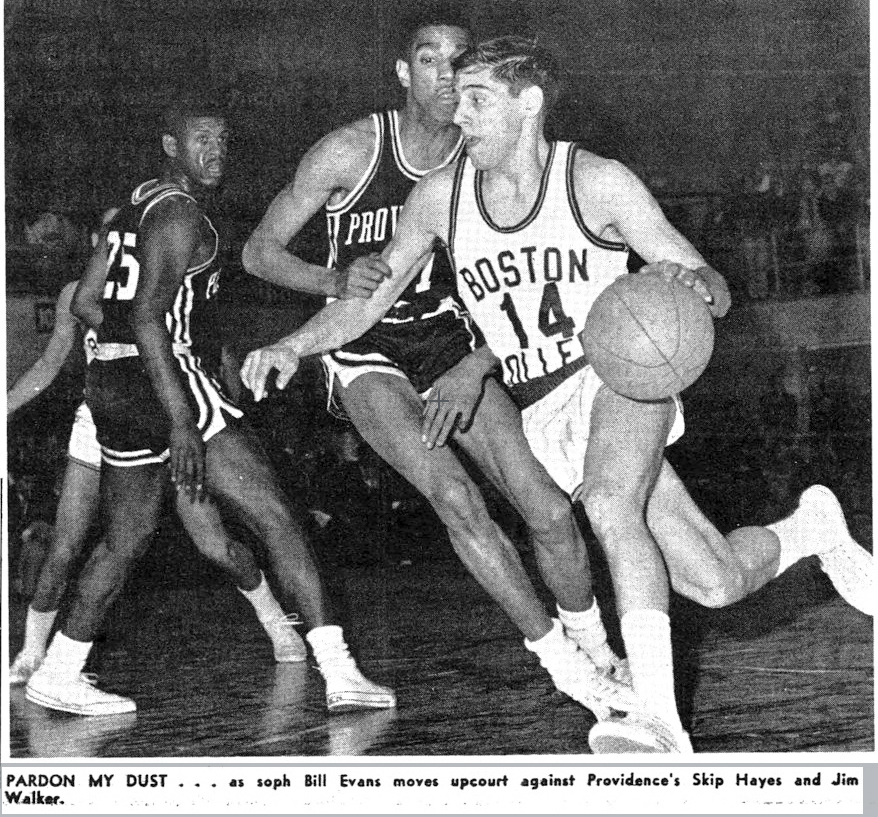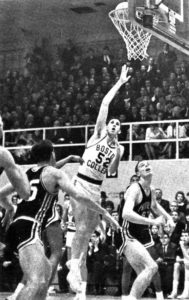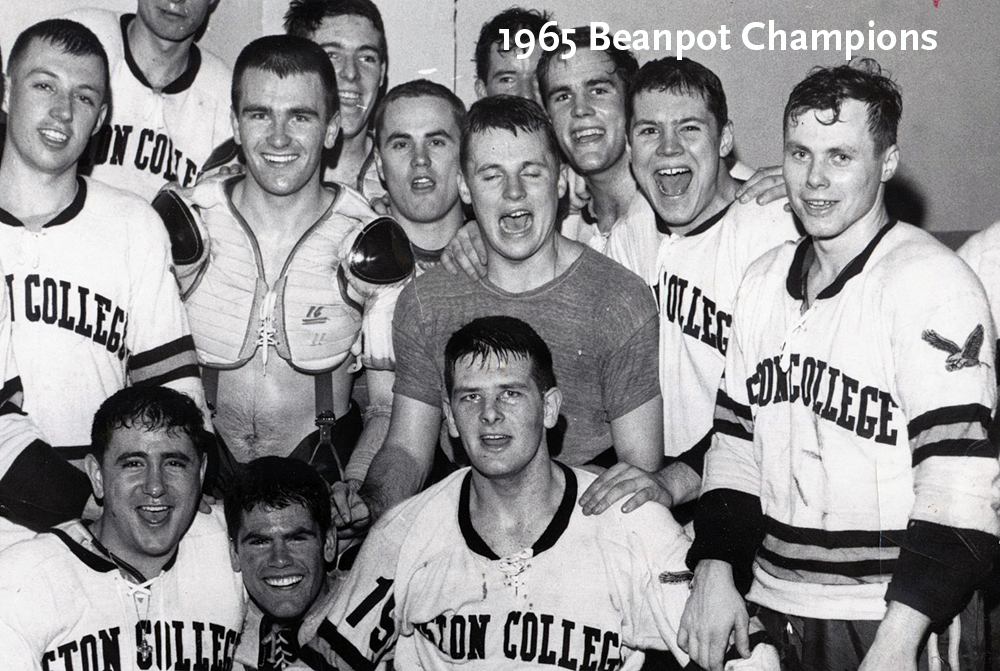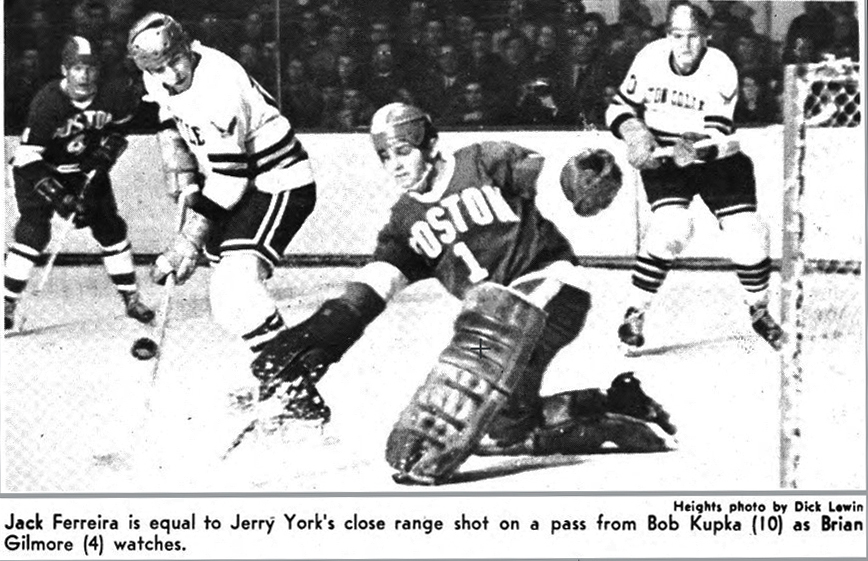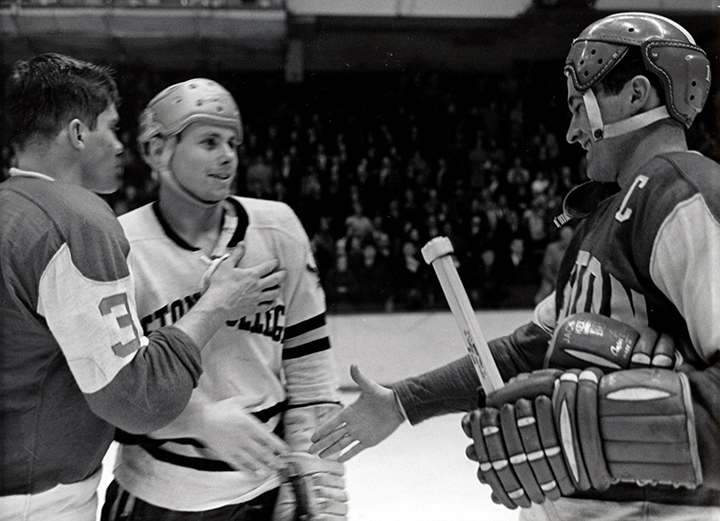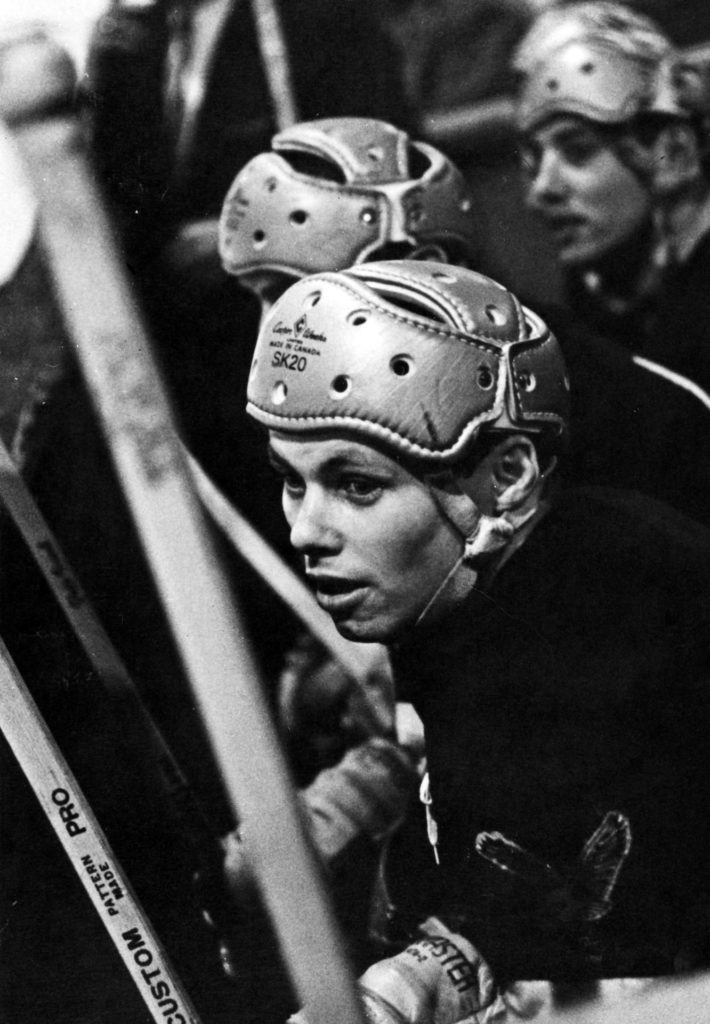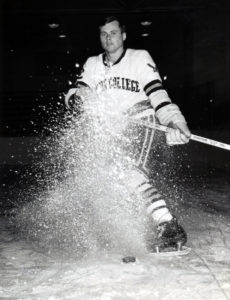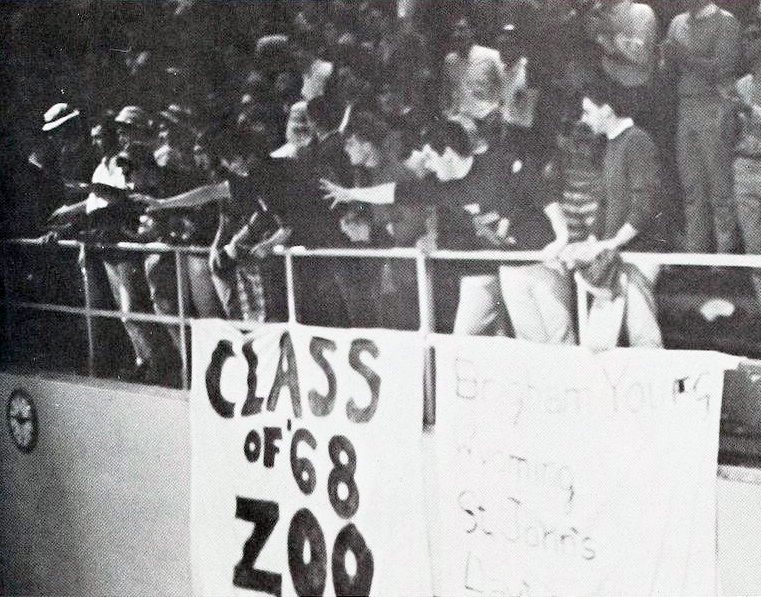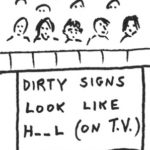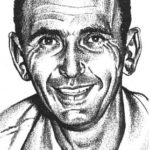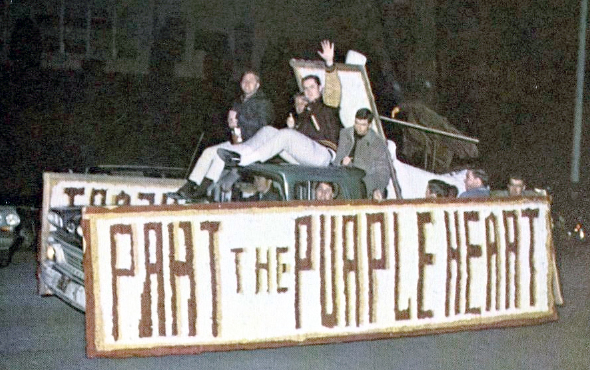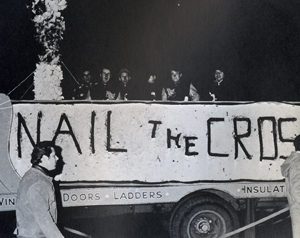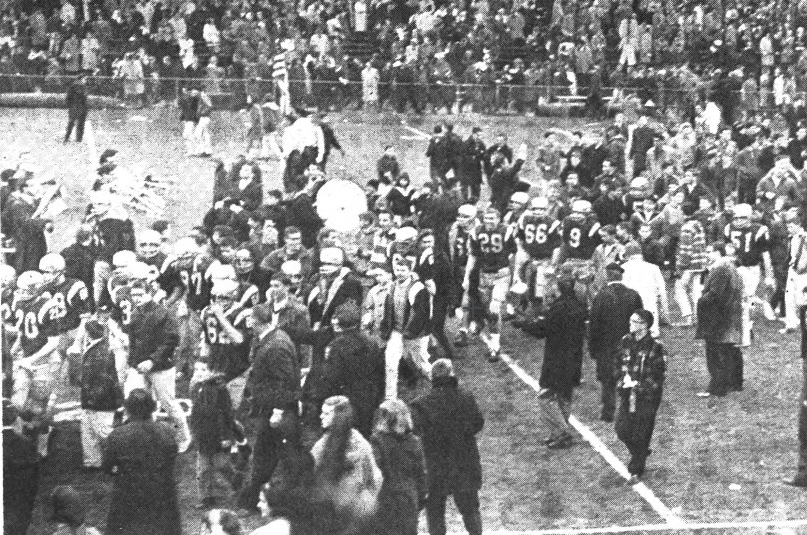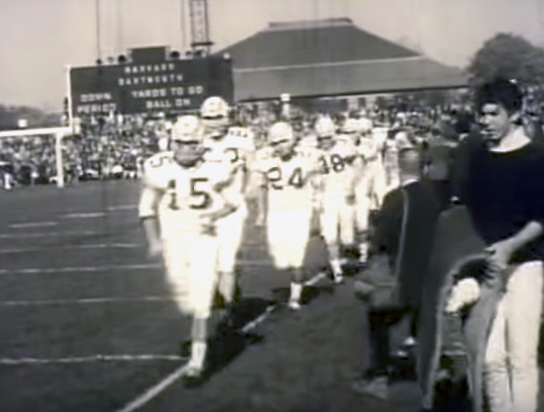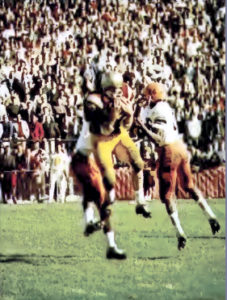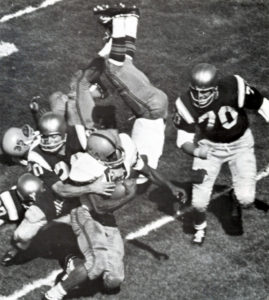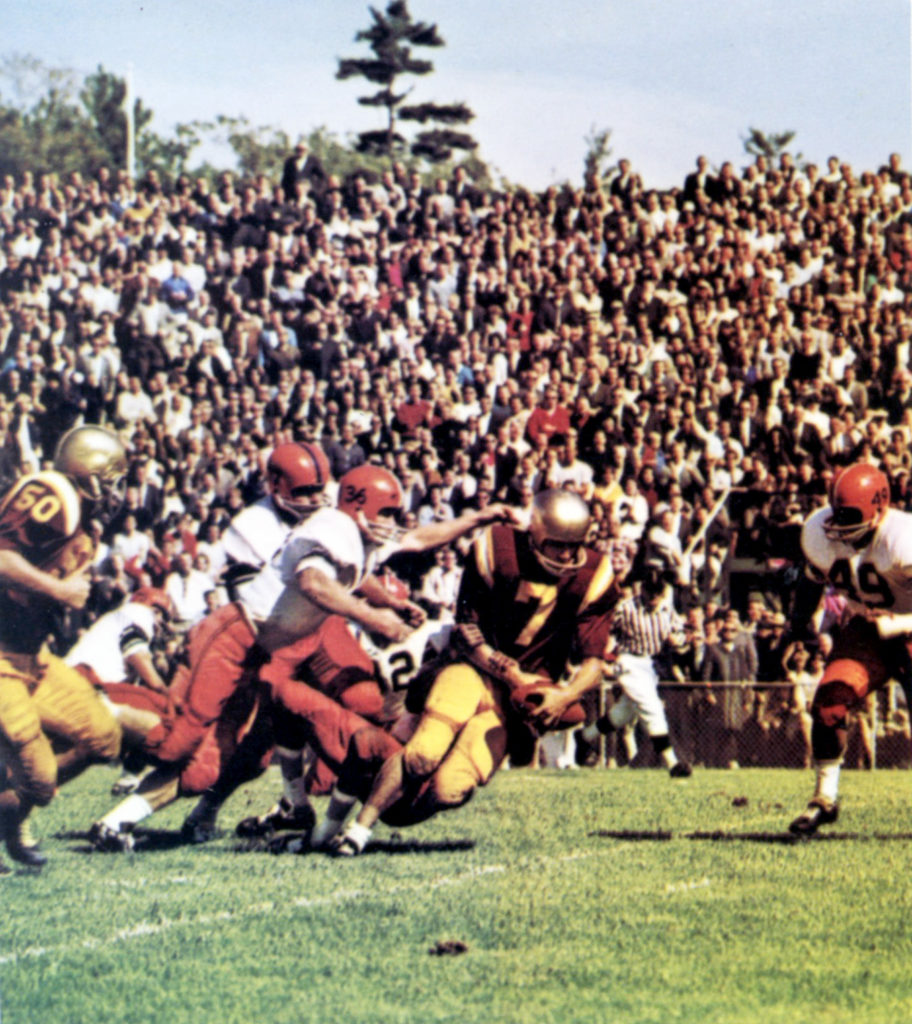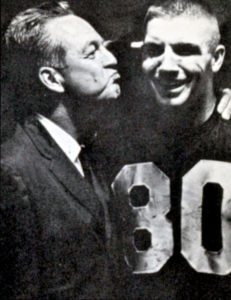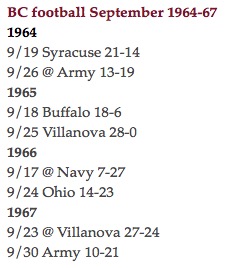Fifty years ago today, January 27, 1968, the Eagles played UCLA in basketball at Madison Square Garden, New York City. It was an opportunity for BC fans to see their team play the most storied college basketball team . . . and player . . . of the time.
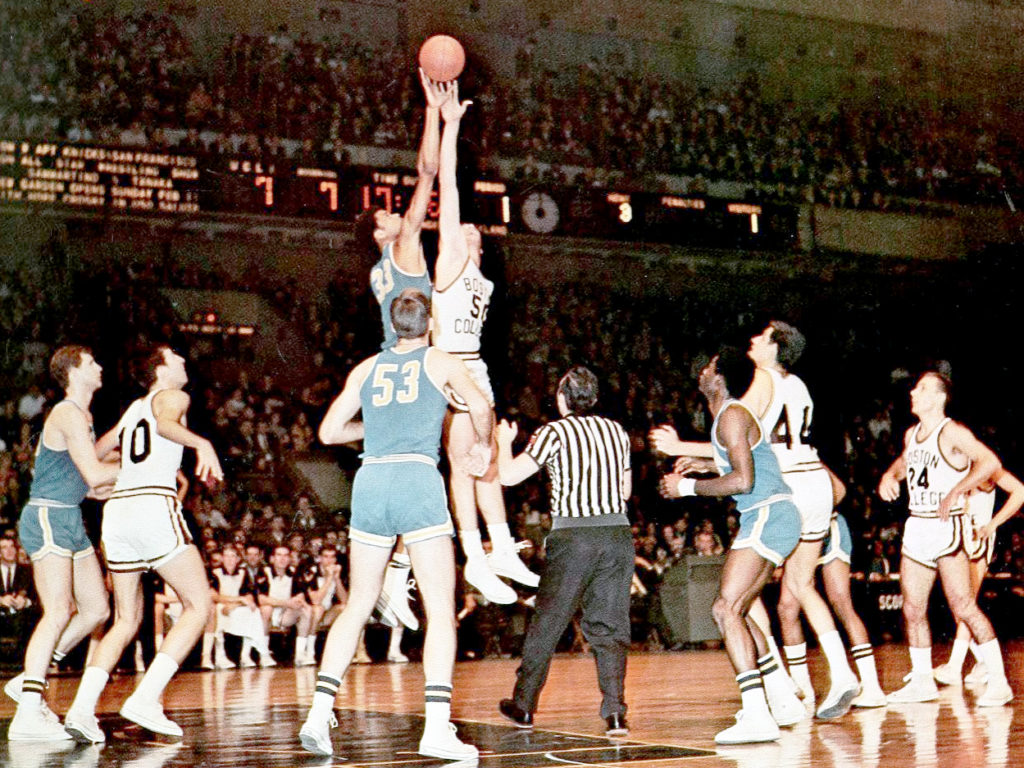
BC’s Terry Driscoll ’69 in a jump ball with Lew Alcindor early in the BC-UCLA game. Also in this Sub Turri photo, classmates Jim Kissane (10), Steve Adelman (44), and Jack Kvancz (24).
The Bruins simply dominated the college basketball scene in the mid-sixties, and into the mid-seventies. When we were freshmen, UCLA went 28-2 and won their second consecutive national championship. Among those 28 wins was one over BC, 115-93, on December 19, 1964, in Los Angeles. The following year, 1965-66, was an awful one in Bruins terms. Ranked #1 preseason, they were 18-8 and unranked at the end of the season. There were portents, though, that year of things to come. UCLA’s freshmen team, in a preseason scrimmage, had defeated the varsity, 75-60.
Scoring 31 points and pulling down 21 rebounds in that scrimmage was 7-foot-2-inch Lew Alcindor, who had played his high school ball at Power Memorial in New York City. (In 1968, Alcindor converted to Islam and began using the name Kareem Abdul-Jabbar publicly in 1971.) Joining Alcindor as freshmen were Lynn Shackelford and Lucius Allen, who would also play in the 1968 game against BC.
When Alcindor and the other freshmen joined the varsity in 1966-67, the run was on. Thirty and 0 that year and national champions. The Bruins started the 1967-68 season with 13 straight wins, bringing a 47-game win streak into what was billed as the “Game of the Century” on January 20, 1968. UCLA played the undefeated and #2-ranked Houston Cougars, and their great player, Elvin Hayes, in the Houston Astrodome.
One indication of how long ago this was is that this was the first regular season college basketball game to be televised nationally. And it was not on a major network, the only such networks being NBC, CBS, and ABC at the time. The UCLA-Houston game was televised on a syndicated network, TVS. One hundred and twenty stations around the country signed up for the event.
Eight days before the Houston game, in a game against Cal, Alcindor suffered a scratched cornea in his left eye. He missed the next two games and spent several days in the hospital receiving treatment. His first game back was against Houston.
In front of 52,693 fans, Houston’s Hayes scored 29 points in the first half against UCLA, finishing with 39, and Houston won the game 71-69. Alcindor scored a way-below-average 15 points.
We started by mentioning the BC game. Whatever happened to that? Well, the UCLA-Houston game had set the stage the week before the BC game took place. UCLA came into Madison Square Garden to play Holy Cross, then coached by Alcindor’s high school coach, on Friday night, defeating the Crusaders, 90-67. So UCLA was on a one-game winning streak when they took the court with the Eagles.
Oddly enough, the Eagles had had a similar week. They lost to St. Joseph’s the previous Saturday and defeated LeMoyne handily two days before.
As the record shows, UCLA beat BC, 84-77. But, as classmate Bob Ryan, who later went on to a 40+-year career as a sportswriter with the Boston Globe and who has been described as “the quintessential American sportswriter,” demonstrated something close to that status even in his article in the February 2, 1968, edition of The Heights: “Eighteen thousand people came to Madison Square Garden last Saturday night to see an execution. They stayed to see a great ball game.”
Proud Refrain was able to contact three classmates on the basketball team to get some of their recollections from the game.
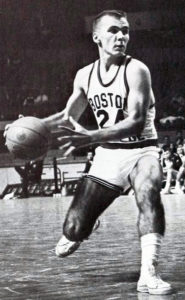 Jack Kvancz, starting guard: “We had a very short scouting report for that game. Usually [then-BC coach Bob] Cousy was very thorough, but this time it was pretty much ‘Do not drive on the big fellow.’ Early in the game, I brought the ball up and I beat Lucius Allen, quite easily, so I go to the basket. And I score a layup. I’m thinking ‘Maybe Cousy got this wrong. I can do that anytime.’ A little while later, I bring the ball up and I beat Allen again. I notice, though, Allen starts running the other way, toward their basket. I go up again and I see this big hand. Alcindor didn’t “block” the ball, he caught it, and then he threw it down the court to Allen for an easy layup. I learned that lesson.”
Jack Kvancz, starting guard: “We had a very short scouting report for that game. Usually [then-BC coach Bob] Cousy was very thorough, but this time it was pretty much ‘Do not drive on the big fellow.’ Early in the game, I brought the ball up and I beat Lucius Allen, quite easily, so I go to the basket. And I score a layup. I’m thinking ‘Maybe Cousy got this wrong. I can do that anytime.’ A little while later, I bring the ball up and I beat Allen again. I notice, though, Allen starts running the other way, toward their basket. I go up again and I see this big hand. Alcindor didn’t “block” the ball, he caught it, and then he threw it down the court to Allen for an easy layup. I learned that lesson.”
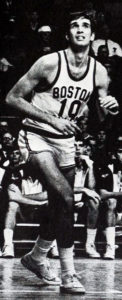 Jim Kissane, starting forward, had an interesting comment on a sartorial issue: “I remember walking into Madison Square Garden and passing the UCLA team. We had on our ugly maroon blazers that we traveled in, which had been made for the football team. You can imagine how those fit! We were all long and skinny and the blazers were all wide and short. UCLA looked like they stepped out of GQ magazine or the Mod Squad, long leather coats and even a few hats. We should have known we were in trouble right then!
Jim Kissane, starting forward, had an interesting comment on a sartorial issue: “I remember walking into Madison Square Garden and passing the UCLA team. We had on our ugly maroon blazers that we traveled in, which had been made for the football team. You can imagine how those fit! We were all long and skinny and the blazers were all wide and short. UCLA looked like they stepped out of GQ magazine or the Mod Squad, long leather coats and even a few hats. We should have known we were in trouble right then!
“We had played in Madison Square Garden many times but this was different,” he added. “The noise level was incredible and there was standing room only.The first half seemed to fly by and they were as good as advertised. They couldn’t miss and we were in a good size hole at halftime.The second half, we made a huge comeback and played much better. If memory serves me, we were down four with the ball and two-three minutes to go, eventually losing 84-77.”
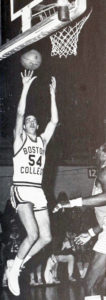 Tom Pacynski
Tom Pacynski, reserve center/forward: “The game was the red letter game on our schedule and I recall that the aura of the Garden was amazing. It was like looking through a cloud when looking to the high seats. I recall playing against Lew in the second half and coach Cousy wanted us to play ‘physical.’ Lew didn’t like physical play and, as a result, became frustrated and eventually fouled out (editor note: the only time in his college career). The memory for me that stands out most was my ‘air ball’ from the foul line.
“We played well, but not quite well enough. I recall Billy [Evans] and Jack [Kvancz] easily handling the UCLA press and [Steve Adelman] (my college roommate) lighting it up with his jumpers.”
Tom scored 16 points in the game, which may have been a season high for him.
UCLA went on that season to win the national championship without losing another game. Indeed, they gained revenge in the NCAA tournament semifinals, defeating the Houston team that had beat them, rather easily, 101-69.
Ryan and classmate Kevin O’Malley broadcast the BC-UCLA game on WVBC. Wouldn’t it be wonderful to be able to hear a tape of that now?
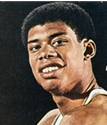 Lew Alcindor — UCLA
Lew Alcindor — UCLA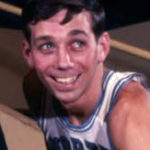 Bobby Lewis — North Carolina
Bobby Lewis — North Carolina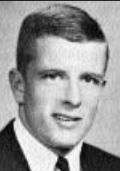 Bill Melchionni — Villanova
Bill Melchionni — Villanova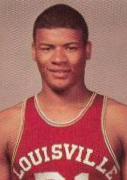 Westley Unseld — Louisville
Westley Unseld — Louisville Jimmy Walker — Providence
Jimmy Walker — Providence

